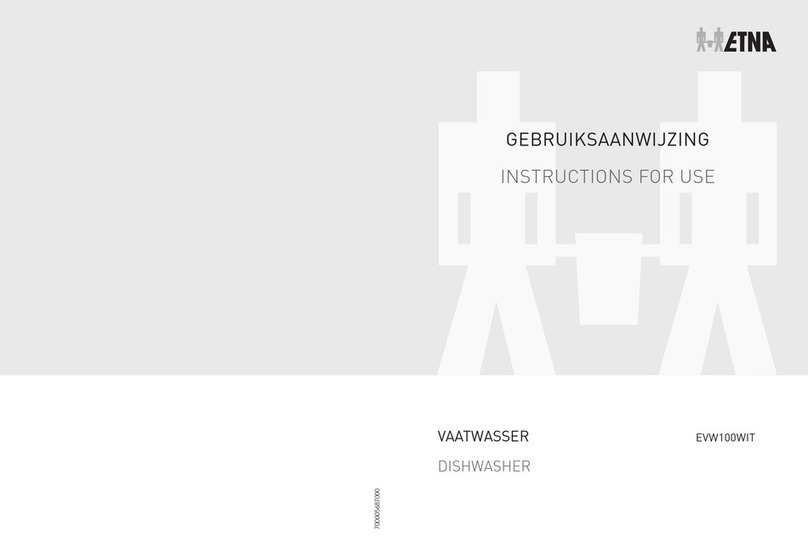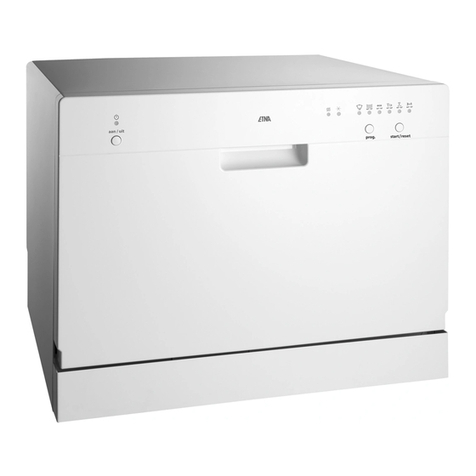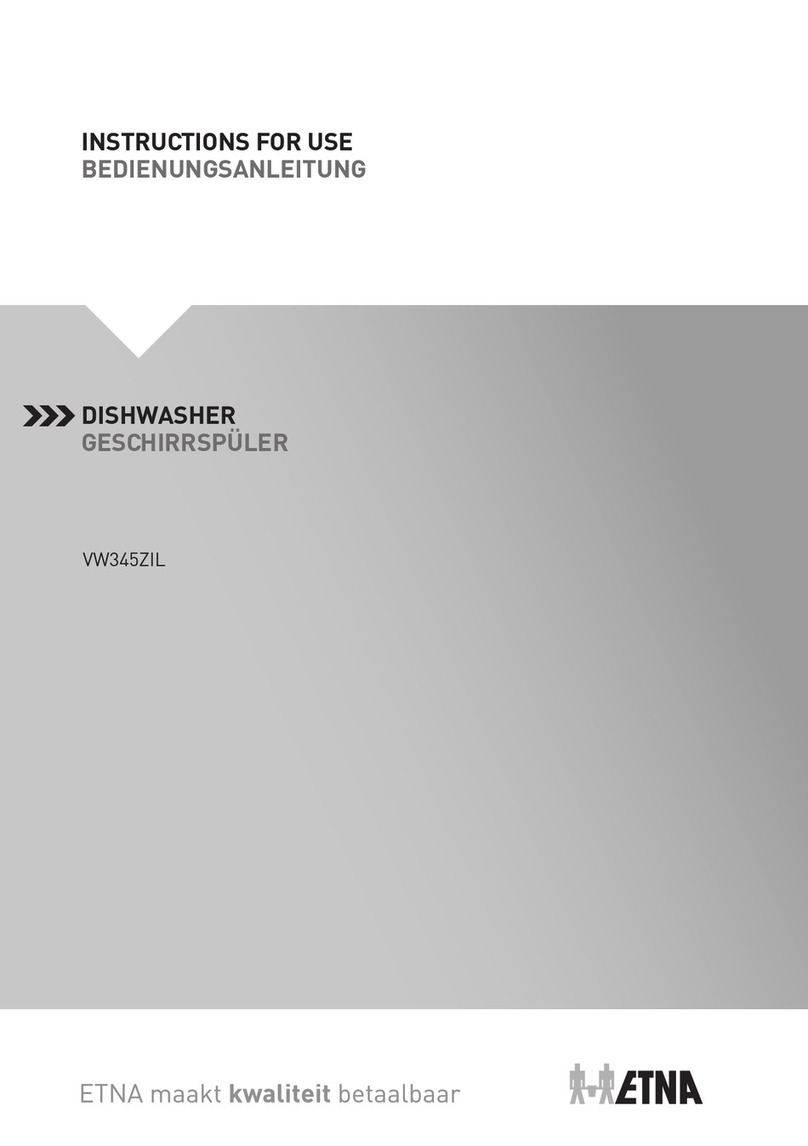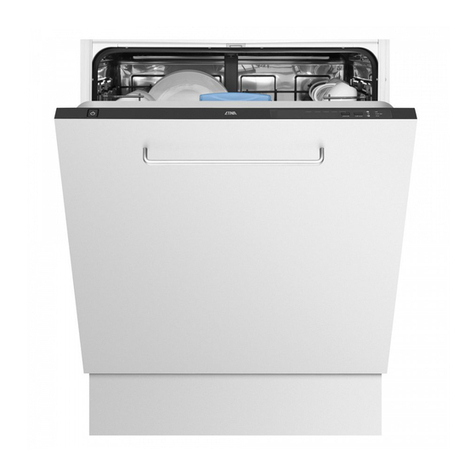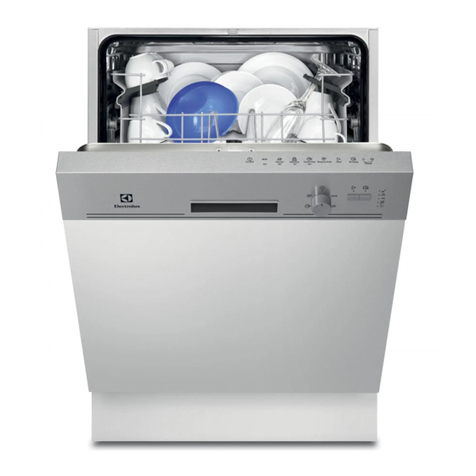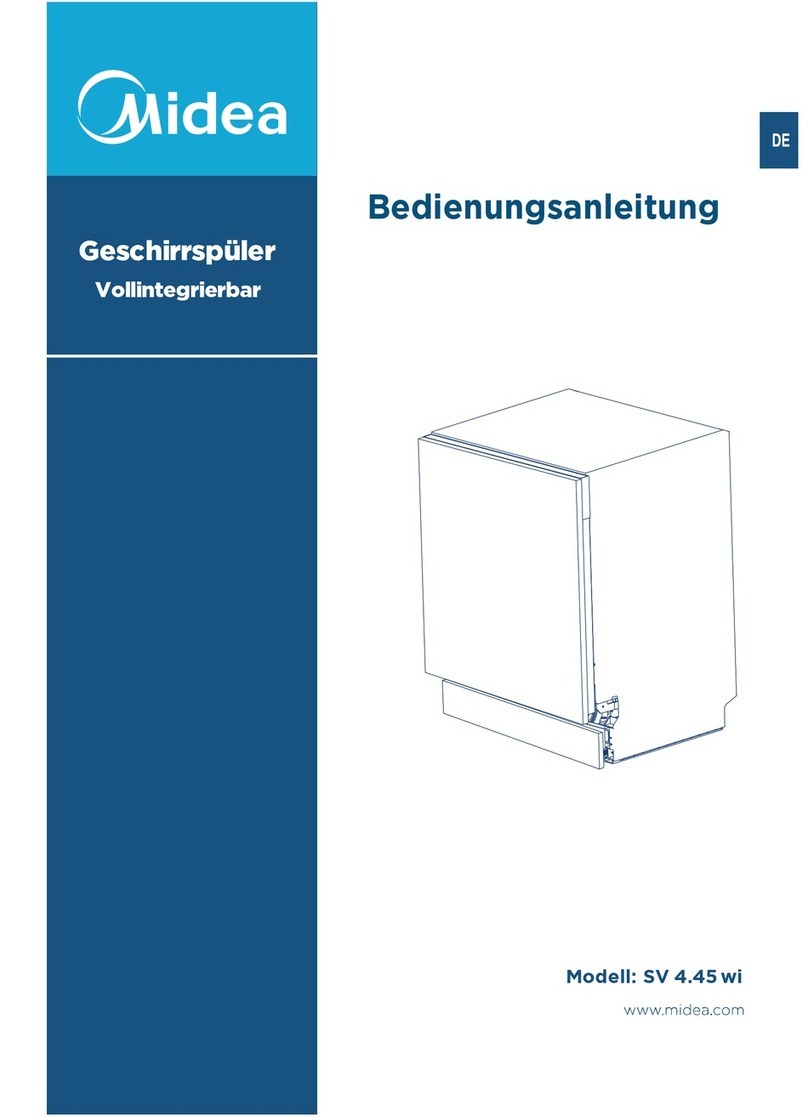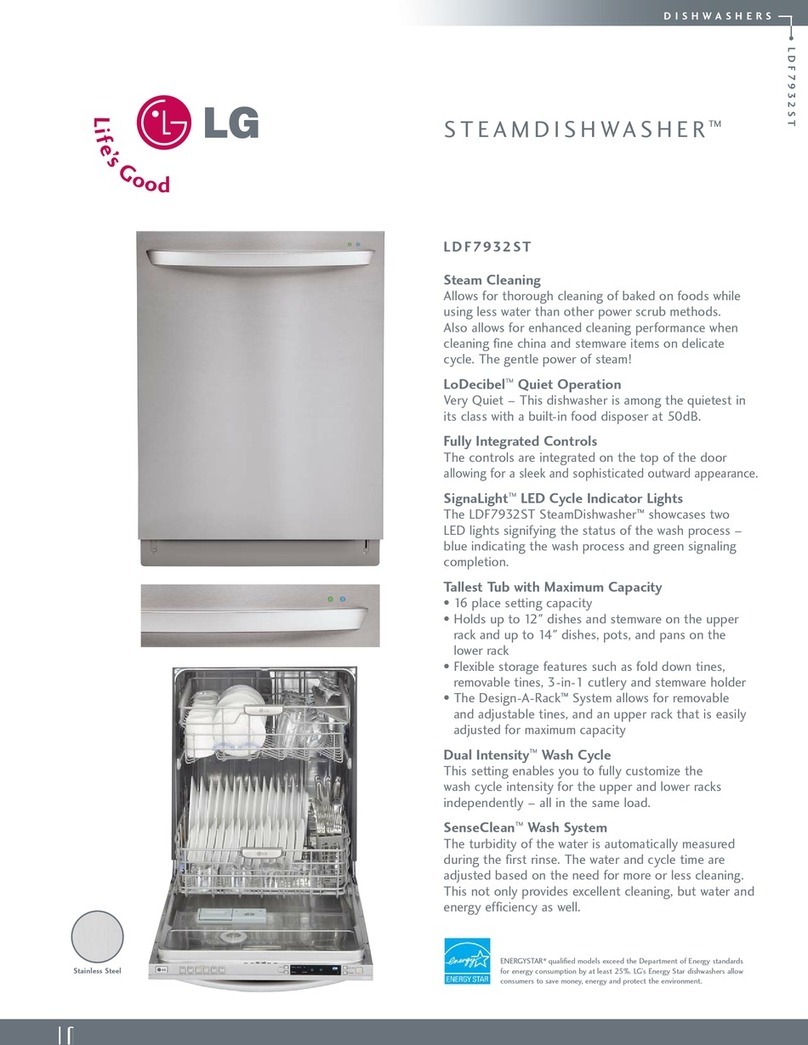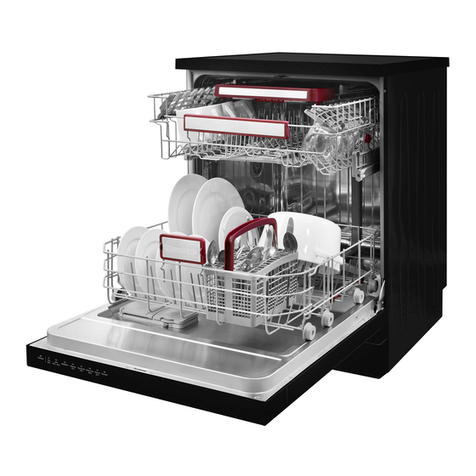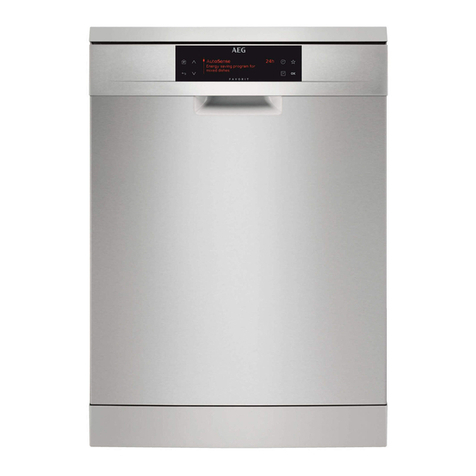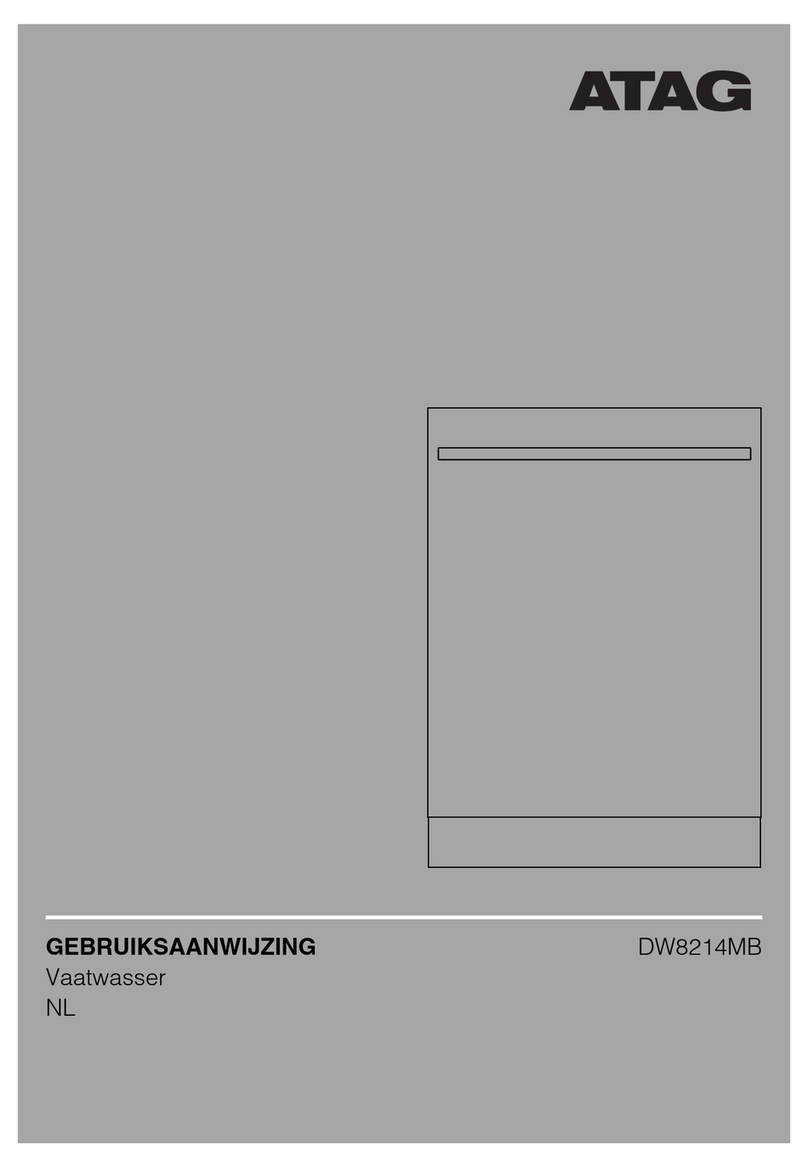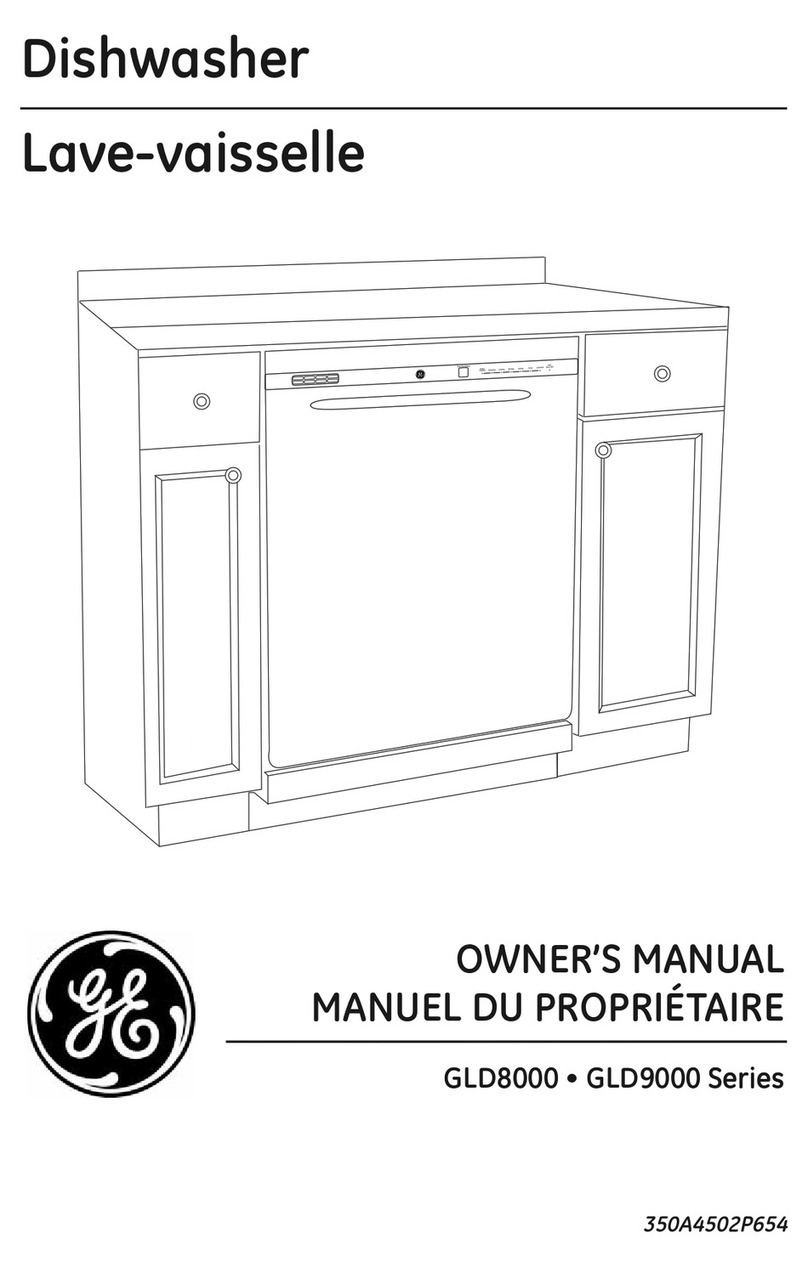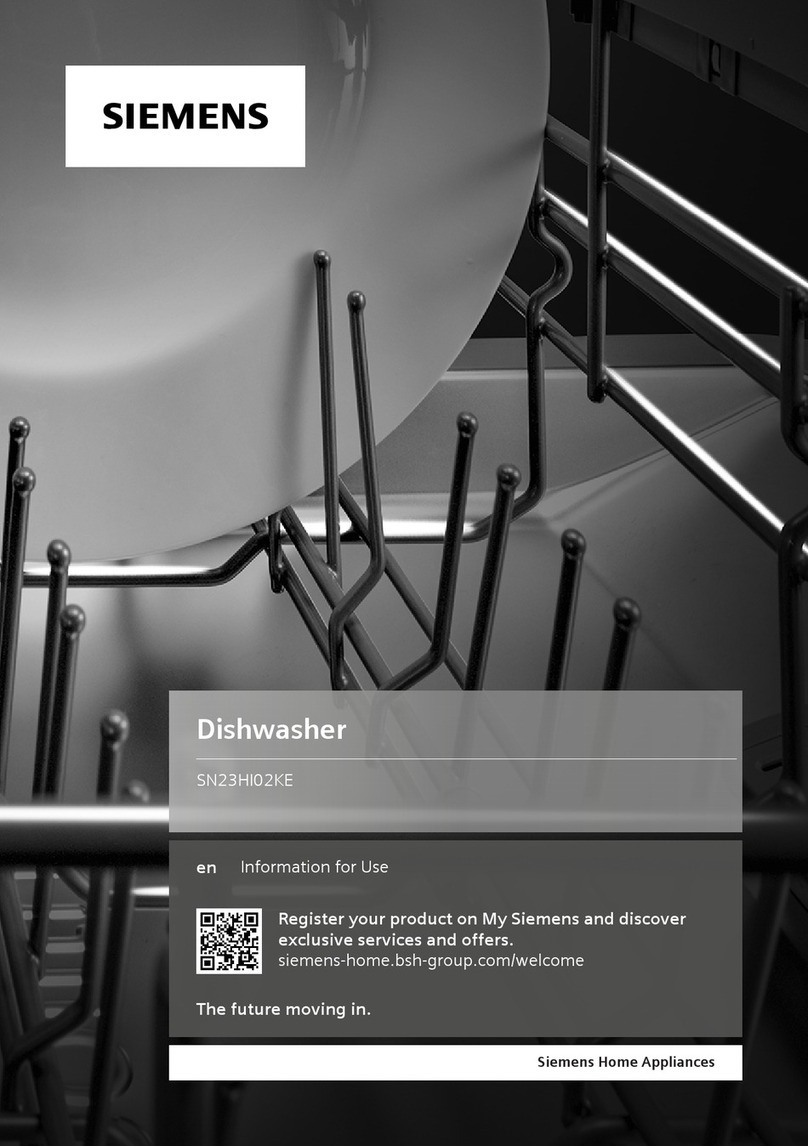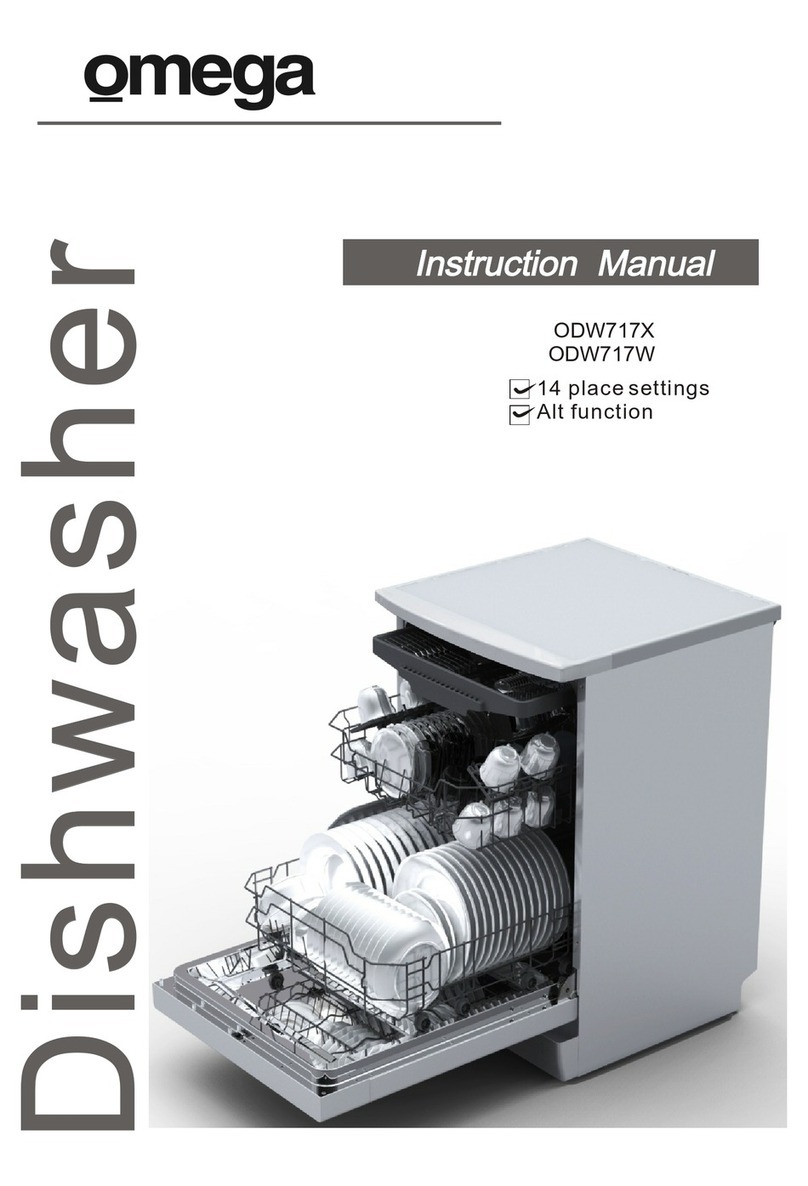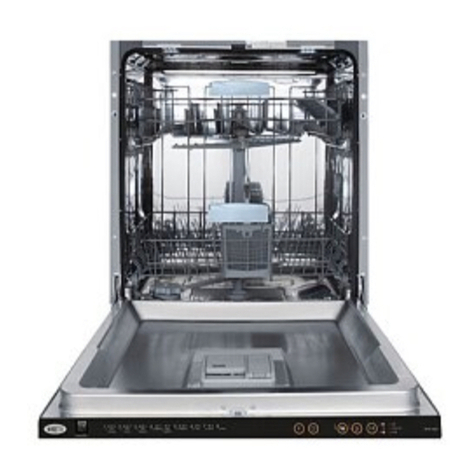
EN 9
Stopping or changing a wash cycle
Open the door.
The last selected program appears on the display.
Press and hold the programming button (3) for more than 3 seconds.
The ‘End program’ indicator is blinking. ‘1’ appears on the display.
Close the door of the dishwasher.
The machine pumps out for about 30 seconds. Following the end
of this, an alarm signal will sound and the indicator shows that the
program has finished.
You can again select the desired program (see page xx program
selection table). Now close the door.
Note! A cycle that has already begun can only be changed in the start-
up phase. After this, the detergent will be sprayed all over the dishes or
the machine may have already pumped out the water. In that instance,
you must refill the detergent compartment (see section on Dishwasher
detergent).
Following the end of the wash cycle
After the washing program has finished, the ‘End program’ indicator
flashes and an alarm signal sounds 5 times.
Open the door of the dishwasher. Switch off the device with the on/off
button (1).
Wait a few minutes before unloading the dishwasher. The dishes and
cutlery will still be very hot immediately following the end of the cycle.
There is a chance that dishes may break as a result of the heat. Moreover,
the dishes dry better when allowed to stand for a few minutes.
Flood protection switch
Your dishwasher is fitted with a safety switch that prevents too much
water from running into the appliance. The safety switch closes the
inlet valve and instructs the dishwasher to pump out the surplus
water. If there is water in machine (due to too much water being fed in
previously, or as a result of a leak), this must first be removed before the
appliance is switched on again.
OPERATION



